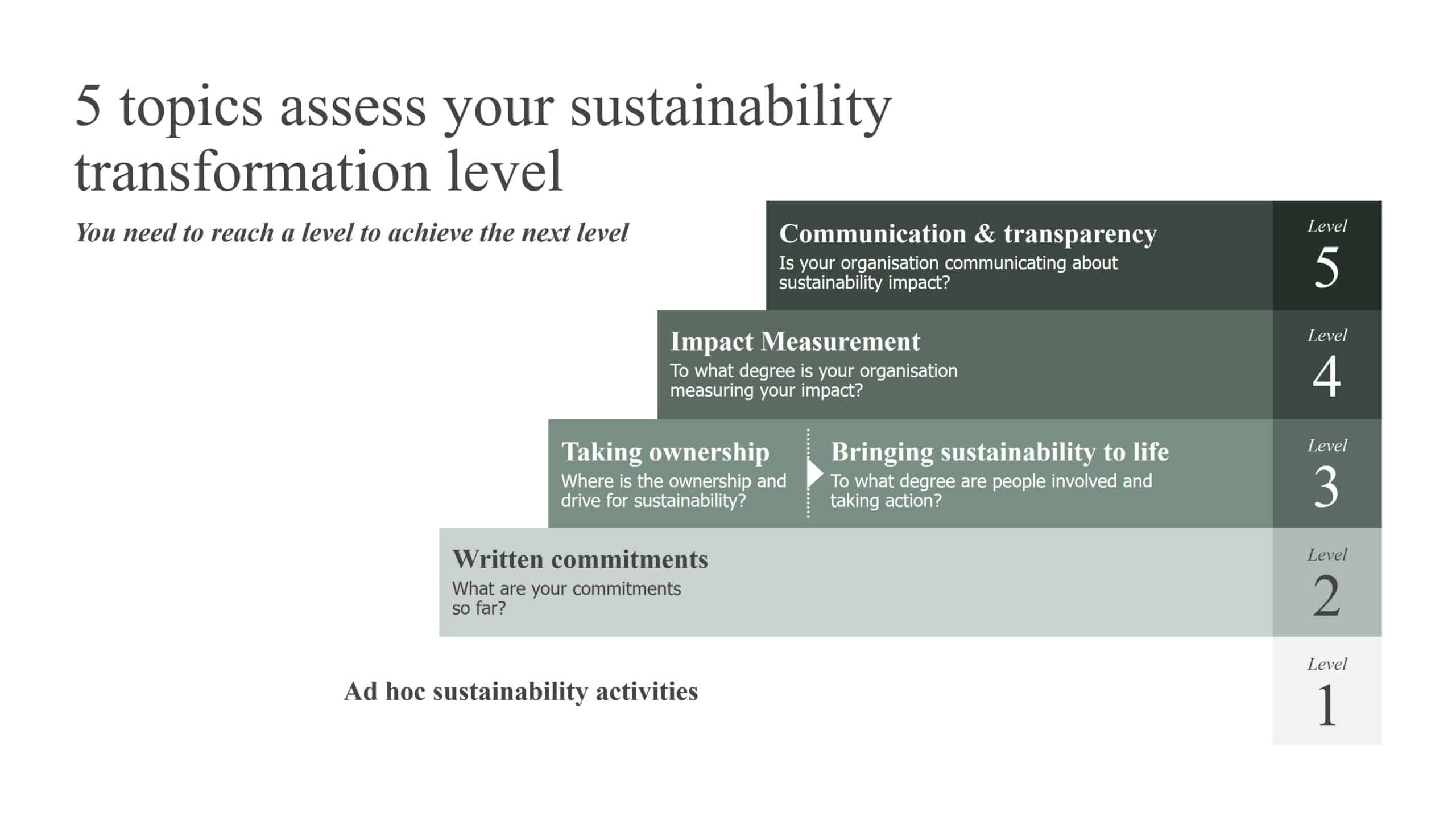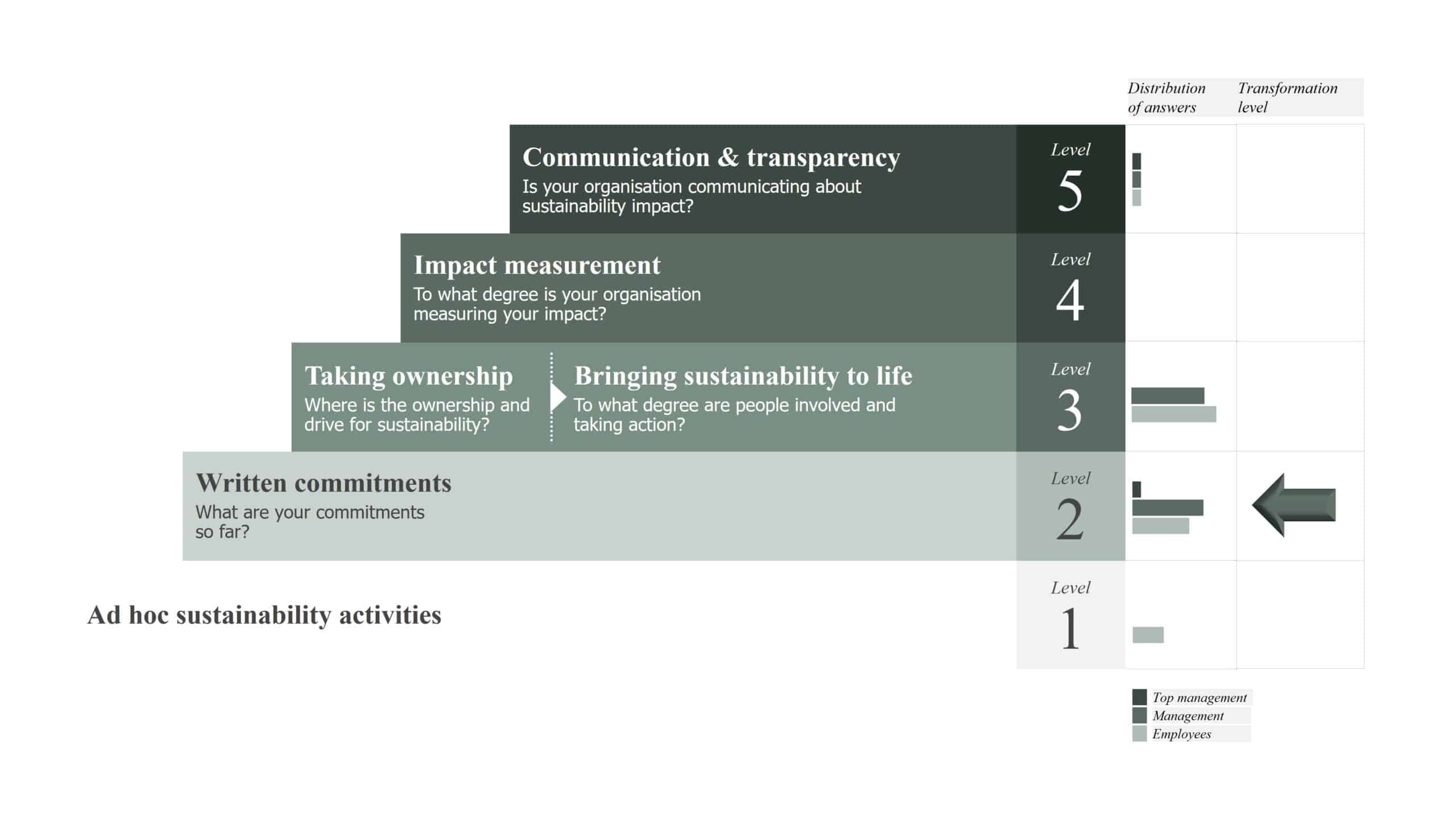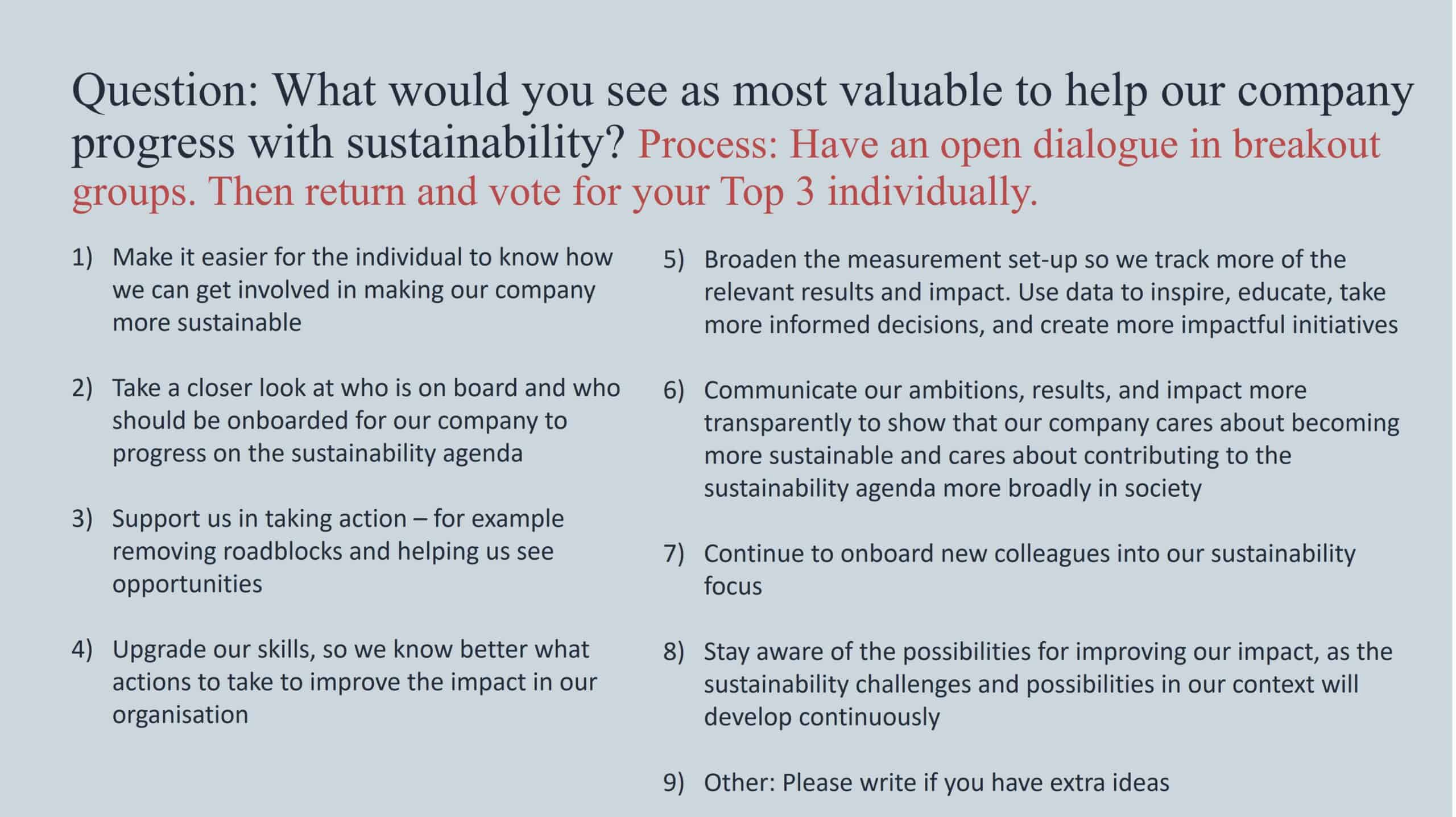24 April 2023
Berit Kristine Bøggild, Client Director at Mannaz

There are several factors behind the successful implementation of sustainability in organisations. It is helpful to be mindful of these different factors and how they interact. You need both formal commitments and real impactful action to be trustworthy. You need both ownership for driving the sustainability agenda and the skills and ESG data to know what to probe and prioritise. You need trustworthy communication to be visible externally and help build momentum for the sustainability agenda – one of the most important agendas of our time.
Are you responsible for all or part of the sustainability strategy and targets in your organisation? If so, the Mannaz Sustainability Transformation Index could be a helpful tool:
Taking the temperature on your transformation: Do you know how your organisation perceives the actions your company has taken towards becoming more sustainable? People tend to be more engaged and get better ideas on how to become more sustainable when they believe your organisation is serious about becoming more sustainable, and that it includes their role and responsibilities as well.
If you need more than a few dedicated people and departments to engage in sustainability to succeed with your strategy, then the Mannaz Sustainability Transformation Index can help you uncover how your sustainability transformation performance is perceived by your organisation. Often, people’s perceptions will differ, so it is helpful to use the index results to choose a matching differentiated approach to get people on board.
Company example A: The company had launched a new strategy including sustainability ambition, targets, and initiatives. They wanted to get a status survey on how the work on sustainability was being perceived by the broader organisation.
As a company where sustainability was a clear and integrated part of their strategy, they wanted to take the temperature of how the sustainability efforts were progressing, as well as collect input on what would be helpful next steps from the broader organisation.
They used the Mannaz Sustainability Transformation Index. The index is a set of questions that covers five different topics. Based on the answers to the questions, the index rates the organisation’s transformation level and supports this rating with recommendations.

When the company surveyed the status, some initiatives had already been taken and several new initiatives had been announced. Their total index result was a Level 2, indicating that too many people were missing an experience of ownership and action for the company to reach Level 3.
Just as interesting as the total level is the distribution of answers at the different levels: A small percentage landed on Level 1 and Level 5. The majority were divided between Level 2 and Level 3.

A member of top management was surprised that not more people were aware of all the action that had already taken place or been initiated. The person’s own index result was Level 5. This was based on them having more insight into what was being done, measured, and communicated. It also indicated that, as top management, they were perhaps not completely in tune with the degree of action taken by their organisation on the strategy.
The display of the answers showed that, compared to both top management and employees, a higher percentage of middle management rated the company efforts to be at the fairly low Level 2 – that is, only written commitments. Complementary to these results, a breakdown of the data into different respondent groups and subtopics showed that all respondent groups saw the main drivers of the sustainability agenda to be coming from top management and employee level. As middle management is essential for a sustainability transformation to succeed, this pointed towards a need to focus on getting middle management on board.
To engage people broadly in progressing with sustainability, management used a virtual quarterly company meeting to share the survey results (Figure 2). The whole organisation was asked to discuss the results and give their Top 3 recommendations for actions they believed would help the company reach Level 5. Figure 3 below shows the actions they could vote for. These actions were selected based on the recommendation provided by the Index for how to progress from Level 2 and Level 3.

The votes for Top 3 showed that there was a need for a differentiated approach. Some people were requesting help to take relevant action – initiatives 1), 3) and 4) – while others were requesting better measurement and more communication. The company’s next step was to summarise a Top 5 action list, and then to dose and mix the chosen Top 5 actions in a good way.
The specific requests for more communication gave an interesting insight: Those who were not directly engaged in sustainability efforts did not notice the organisation-wide communication about sustainability. This made it an obvious ‘triple effect’ solution to engage more people in the sustainability initiatives so they both would get more specific knowledge, notice more of the company-wide communication, and contribute with more action.
As a next step, the company expanded a structure with Initiative Teams to make it possible for more people from across the organisation to join specific teams out of interest and motivation. In this way, anyone could help achieve the sustainability targets independently of their formal roles. This engagement structure was one of the ways to succeed with the strategy.
Two additional client examples could also be of inspiration. They show how challenges can call for action at different levels, such as taking ownership, upgrading skills for taking action, measurement and, communication.
Company example B: Lack of sufficient progress on the set targets
A sustainability accelerator programme made the following clear: There was a need to systemise measurements to help achieve targets. It should have been clarified who was, or should have been, taking ownership and held accountable. The lack of concrete ideas for how to actually move the needle on the sustainability targets was also made clear.
So, the prioritised efforts became:
For this client, gender balance targets were the challenge. We have also seen how similar challenges occur with other sustainability targets that are not easily fixed within one or two years.
Company example C: Lacking measurement and communication of sustainability impact
Through a programme and sparring process, the client concluded: They had an advanced cleaning and disinfection product and service but needed to choose the ways to better measure their impact on SDG 3 (improving health through disinfection) and position the positive measurement better with their customers. They also needed to communicate this internally to their different employees, for three main reasons:
Are you responsible for all or part of the sustainability strategy and targets in your organisation and would you like to use the Mannaz Sustainability Transformation Index? Please feel free to contact SustainabilityMannaz@mannaz.com
The standard index is free to use. Options for tailoring of questions and respondent categories are available.